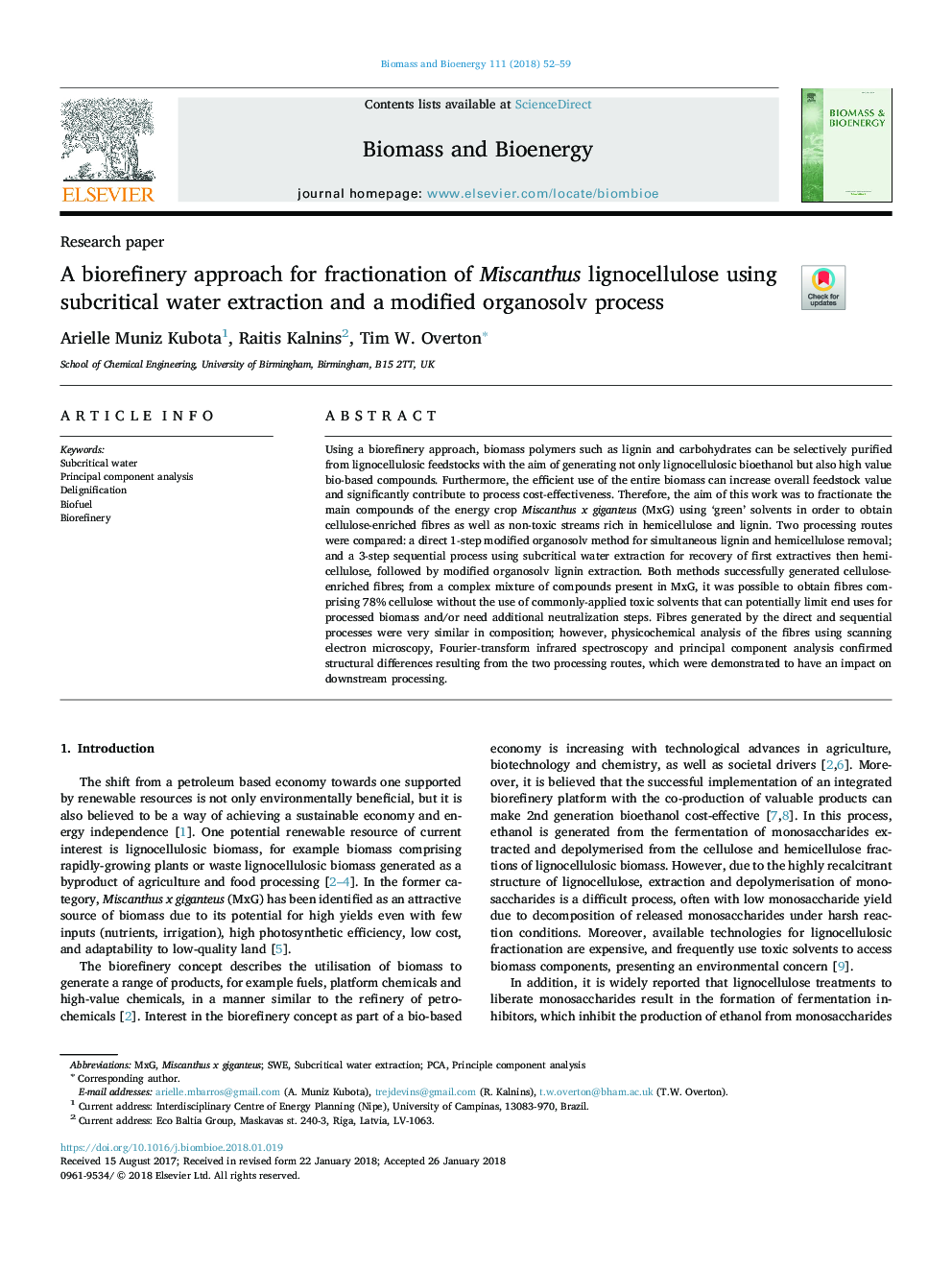| Article ID | Journal | Published Year | Pages | File Type |
|---|---|---|---|---|
| 7062936 | Biomass and Bioenergy | 2018 | 8 Pages |
Abstract
Using a biorefinery approach, biomass polymers such as lignin and carbohydrates can be selectively purified from lignocellulosic feedstocks with the aim of generating not only lignocellulosic bioethanol but also high value bio-based compounds. Furthermore, the efficient use of the entire biomass can increase overall feedstock value and significantly contribute to process cost-effectiveness. Therefore, the aim of this work was to fractionate the main compounds of the energy crop Miscanthus x giganteus (MxG) using 'green' solvents in order to obtain cellulose-enriched fibres as well as non-toxic streams rich in hemicellulose and lignin. Two processing routes were compared: a direct 1-step modified organosolv method for simultaneous lignin and hemicellulose removal; and a 3-step sequential process using subcritical water extraction for recovery of first extractives then hemicellulose, followed by modified organosolv lignin extraction. Both methods successfully generated cellulose-enriched fibres; from a complex mixture of compounds present in MxG, it was possible to obtain fibres comprising 78% cellulose without the use of commonly-applied toxic solvents that can potentially limit end uses for processed biomass and/or need additional neutralization steps. Fibres generated by the direct and sequential processes were very similar in composition; however, physicochemical analysis of the fibres using scanning electron microscopy, Fourier-transform infrared spectroscopy and principal component analysis confirmed structural differences resulting from the two processing routes, which were demonstrated to have an impact on downstream processing.
Keywords
Related Topics
Physical Sciences and Engineering
Chemical Engineering
Process Chemistry and Technology
Authors
Arielle Muniz Kubota, Raitis Kalnins, Tim W. Overton,
